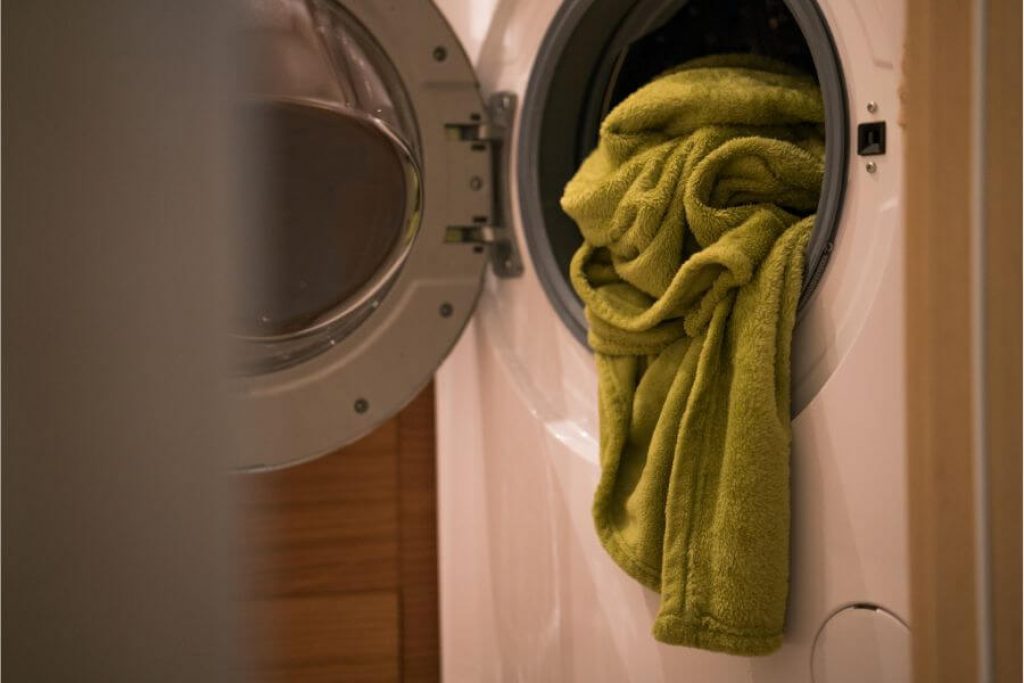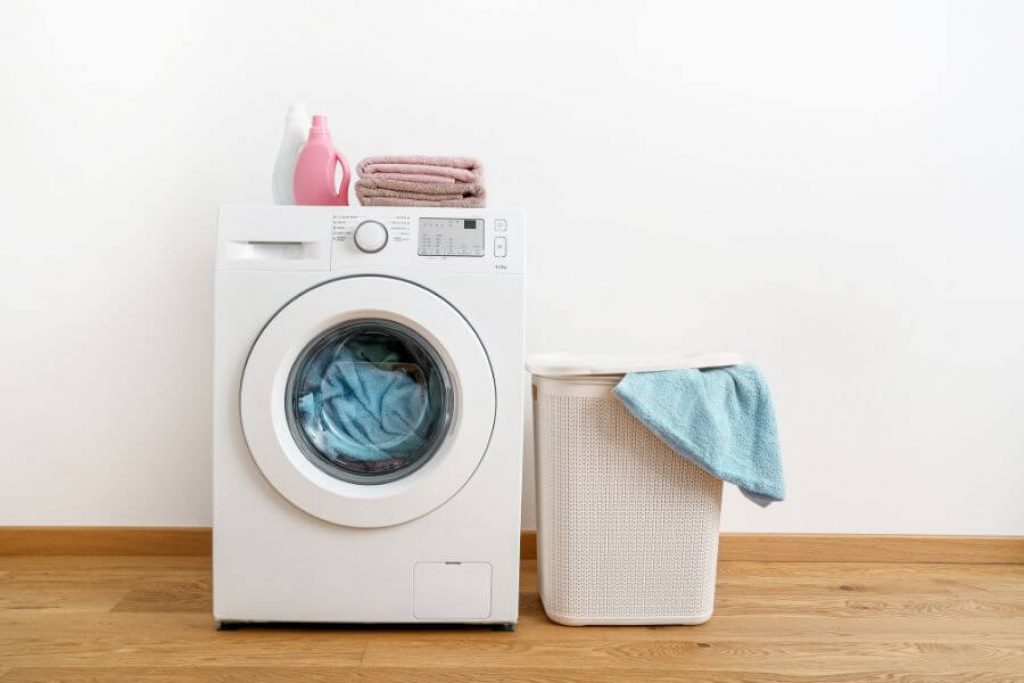Are you finding yourself waking up sneezing or with a stuffy nose?? Dust mites might cause this! They are often found in comforters and mattresses which can cause allergies or asthma attacks in some people. If you have dust mite allergies, it is essential to keep your comforter clean. The comforter adds an extra layer of warmth on top of the fitted sheet and blankets. While most people believe that cleaning their comforters is unnecessary, keeping them in good condition is essential.
Like any other clothing or bedding, a comforter will last longer if it is well-cared for. Regular cleaning will help to prevent wear and tear and extend the life of your comforter.
Cleaning your comforter is important because it will prevent dust mites from accumulating.If you have dust mite allergies, it is especially important to keep your comforter clean.
Over time, regular cleaning of your comforter will inevitably collect some dirt and stains. Regular cleaning will help to keep these at bay and prevent them. Regular cleaning will keep your comforter looking and feeling it’s best for years.
How Often Do You Need to Wash Your Comforters?

Comforters are one of those things that can be used for a long time without necessarily needing to be washed.
However, there are certain circumstances where you might need to clean your comforter more frequently.
Washing a comforter may appear complex and time-consuming, but the good news is that comforters don’t have to be cleaned as frequently as sheets or other clothes. According to cleaning experts, washing comforters twice a year ensures they stay fresh.
If you have allergies or sleep with a pet that could transfer allergens to your bedding, you may want to consider washing your comforter more frequently throughout the year. It will help protect against dander, dust mites, and other potential allergens.
If you don’t have allergies and generally take care of your comforter, following the rule of every two to three months should suffice. However, people with dust or pet dander allergies may need to wash their comforters more often (maybe around monthly), so it won’t aggravate their condition.
If your comforter has a protective covering on top, remember that it must be washed at least weekly if it comes into direct contact with your skin.
If you wash a comforter too frequently, the materials and stuffing might be overworked, causing irreversible and quick damage.
If you don’t wash your comforter enough, surface dirt, dust and grime will accumulate and make your bed unhygienic; this impacts your health and can also damage the comforter itself.
Things To Keep In Mind While Before Cleaning a Comforter

Always Check the Care Tags Before Cleaning
Damage to your comforter can quickly occur if you don’t follow the care instructions the manufacturer provides. These labels are typically located on one of the bottom corners of the comforter.
Many care tags will tell you whether a comforter is best machine-washed or dry-cleaned, the proper water temperature to use, what laundry detergent to select, if bleach can be employed safely, and the ideal drying cycle.
Make Little Repairs by Own
By examining your comforter for any loose seams or holes, you can save yourself time and frustration in the future. Then, quickly fix these areas with a needle and thread before washing them. Your comforter will last much longer this way.
If you don’t handle your comforter carefully, the washing and drying process could tear more seams or cause larger holes. It would result in the filling leaking out. You might have to buy a new one if the damage is bad enough.
Remove Any Stains
You don’t need to wash your entire comforter if there are only a few stains. Spot treatments can fix that. However, if it’s time for a general wash, pre-treat the comforter by removing any existing stains.
Mix four tablespoons of baking soda and 1/4 cup of cold water to make a paste for future use in an air-tight container. Use warm water instead of hot, as this may cause the stain to be harder to remove.
If the stain is fresh, lightly wet a white rag in cold water and press it against the soiled area without scrubbing, as that may spread the mess. Next, apply a small amount of your homemade stain remover evenly over the entire spot, let it sit for several minutes, then use a clean cloth to blot away both the solution and blemish.
For more stubborn stains, dampen the region with cold water and apply enough DIY stain remover to cover the spot. Rub the remover gently into the stained area, then blot it with a clean, soft cloth.
How to Wash a Comforter

Things you need to wash comforter :
- Mild Detergent
- Washing Machine
- Comforter
- Tennis Balls
Step-by-step Guide to Wash the Comforter:
- Firstly look for the instructions and check the size of its fit perfectly in the washing machine. For example, twin, twin XL is easily likely to fit as compared to king size. Make sure it will not be tightly packed, which can lead to damage to the washing machine.
- Now select the water temperature setting and delicate cycle. It will remove bacteria, dust mites, and allergens from your comforter effectively.
- Then add a mild detergent. It also maintains the clothes’ natural oil.
- If you don’t have a dryer and want to get rid of dust mites, consider using hot water instead of cool water. Water temperatures over 130 degrees will kill them.
- A handful of tennis balls evens out the laundry load and allows for a complete clean.
Hand Washing Your Comforter
Your comforter is one of your most significant investments in bedding, so you want to make sure you take care of it. Washing your comforter regularly will keep it looking its best and help it last longer. However, if you don’t have a washing machine and want to clean it by hand, here is a quick guide on how to hand-wash your comforter.
You will need:
– A large bathtub or basin big enough to fit your comforter
– A mild detergent
– White vinegar
– A clean towel
Step 1: Pour some lukewarm water into the tub and add a little bit of mild detergent to the basin. Gently stir the water around so that the detergent mixes.
Step 2: Carefully place your comforter into the soapy water. Let it soak for 10-15 minutes, then gently massage the fabric to release any dirt or stains.
Step 3: Drain the soapy water and refill the sink or basin with clean, lukewarm water. Swish the comforter a few times to rinse it, then drain the water again.
Step 4: Add 1/2 cup of white vinegar to the final rinse water. It will help to remove any lingering detergent residue and leave your comforter feeling soft.
Step 5: Gently squeeze excess water from the comforter and transfer it to a clean towel. Roll the comforter in the towel and press down to absorb more water.
Step 6: Hang your comforter on a clothesline or drying rack in a well-ventilated area or put it in the dryer. Allow it to air dry ultimately before using it again. Depending on the humidity and temperature, this could take several hours or even a day.
The Drying Process
Place the comforter in the dryer after washing it.
Every 20-30 minutes, take the comforter out of the dryer and fluff it by hand to redistribute the fill and ensure even drying.
Set your tumble dryer to the low heat setting, and check on your comforter every 30 minutes until it’s finished. Remember that your comforter may take longer than an hour to dry thoroughly.
After it is completely dry, turn it out, and air dry your comforter in a sunny, dry location for a few hours. The sun’s rays also destroy any remaining dust mites.
As described above, it ensures that the comforter is completely and uniformly dried. If you don’t allow the comforter to air dry, residual moisture might be left behind, which can lead to mold growth.
How Do You Wash a Comforter Without Ruining It?

Wash your comforter on a delicate cycle with cold or warm water and soap or detergent. Afterwards, rinse the comforter by running it through a quick cycle without any soap to remove residue build-up from the inside out.
Do you have to wash the new comforter before using it?
Before you start using your new comforter, wash it first (even if it’s still in its packaging!). Fabrics, comforters, duvets, and pillowcases are all manufactured in factories that pollute the air with dust, chemicals, dyes, and other skin irritants. So before you relax and sleep well on your new bedding, clean it first!
What is the difference between a duvet and a comforter?
It is important to remember that a comforter should be used as one quilted piece, while a duvet requires a coverlet or top quilt. This makes using a comforter slightly easier than handling a duvet, though the latter is simpler to keep in good Condition.
Why are duvets so popular?
Duvets have a more polished appearance. Because they are particularly created for your mattress size, there is no material hanging off the side. They’re also fluffier than other duvets.
Do you sleep on top of a comforter?
To keep your comforter from being squished or matted down, put it on top of the blanket. It’ll also stay free of sweat if you leave it untucked.
Can I wash my comforter in the bathtub?
Washing your comforter by hand is a simple process that only requires a few materials: a bathtub, cold water, and mild detergent. To begin, mix the detergent into the tub of water using circular motions with your hand. Then, lower your comforter into the mixture until it is entirely submerged–but be careful not to wring it out!
At the End
Comforters that are correctly cared for can last up to 20 years. By frequently cleaning and fluffing it and repairing any seams, you might even be able to extend its lifespan.
Please take note of the care guide included with your comforter. If your washer is not made for bulkier loads, consider taking it to a laundromat or giving it to a dry cleaner. Although hand washing may require more work, you will still end up with a clean and fluffy comforter.





